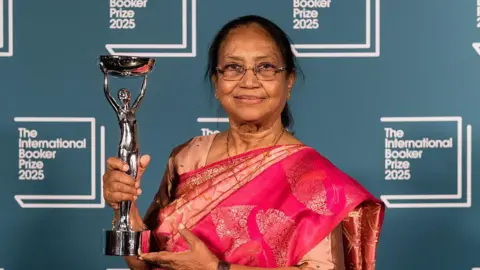In a remarkable achievement, Banu Mushtaq’s collection of stories titled "Heart Lamp" was recently awarded the prestigious International Booker Prize, making history as the first ever story collection translated from Kannada, a rich language from southern India. What sets "Heart Lamp" apart from other literary accolades is not only its groundbreaking recognition but also the unique process behind its translation. The translator, Deepa Bhasthi, selected stories from Mushtaq’s extensive body of work, which includes over 60 stories published throughout three decades.
This collaborative success of Bhasthi and Mushtaq highlights a significant shift in the landscape of literary translation within India, showcasing the efforts to bring diverse Indian narratives to global audiences. Ms. Mushtaq expressed pride in the journey, stating, “I myself have broken all kinds of stereotypes, and now my book has also broken all stereotypes.” At 77 years of age, Mushtaq embodies the spirit of resilience and activism, using her writing to advocate for the struggles faced by women within her community, particularly focusing on feminist themes through the lens of ordinary life.
The stories within "Heart Lamp" delve into the daily experiences of women, often centering on Muslim characters, and serve as a powerful testament to the nuanced and diverse voices emerging from India. The increasing translation of Indian literature into English marks a pivotal transformation in how stories rooted in local languages resonate with readers worldwide, opening the door for broader representation. This collaboration stands not only as a testament to the depth of Indian literature but also as an inspiring example of what can emerge when talented individuals unite in the effort to break down language barriers.























